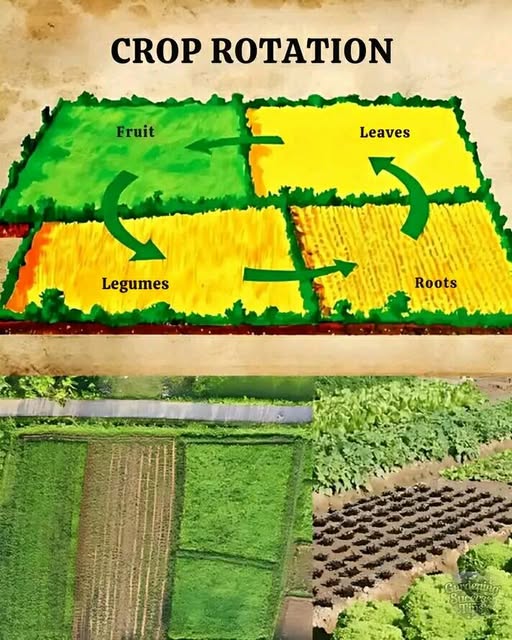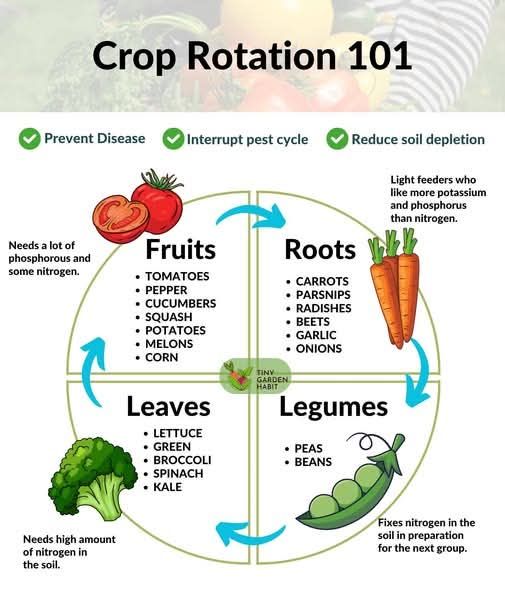
Crop Rotation: A Key Practice for Healthy and Productive Soil 
Crop rotation is an agricultural technique that involves alternating different types of plants on the same soil over various growing cycles. 



We divide crops into several categories, as in the following example:
Each type of plant has specific nutritional needs and provides different benefits to the soil. The benefits include:
•  Prevention of nutrient depletion.
Prevention of nutrient depletion.
•  Helps control pests and diseases that often target specific plants.
Helps control pests and diseases that often target specific plants.
•  Improvement of soil structure and its ability to retain water.
Improvement of soil structure and its ability to retain water.
•  Legumes, for example, fix nitrogen in the soil, which benefits subsequent crops.
Legumes, for example, fix nitrogen in the soil, which benefits subsequent crops.
• Year 1: We grow vegetables to enrich the soil with nitrogen.
• Year 2: Leaves grow, utilizing that nitrogen.
• Year 3: We plant fruits, which require more nutrients.
• Year 4: We grow roots, which help aerate the soil.

